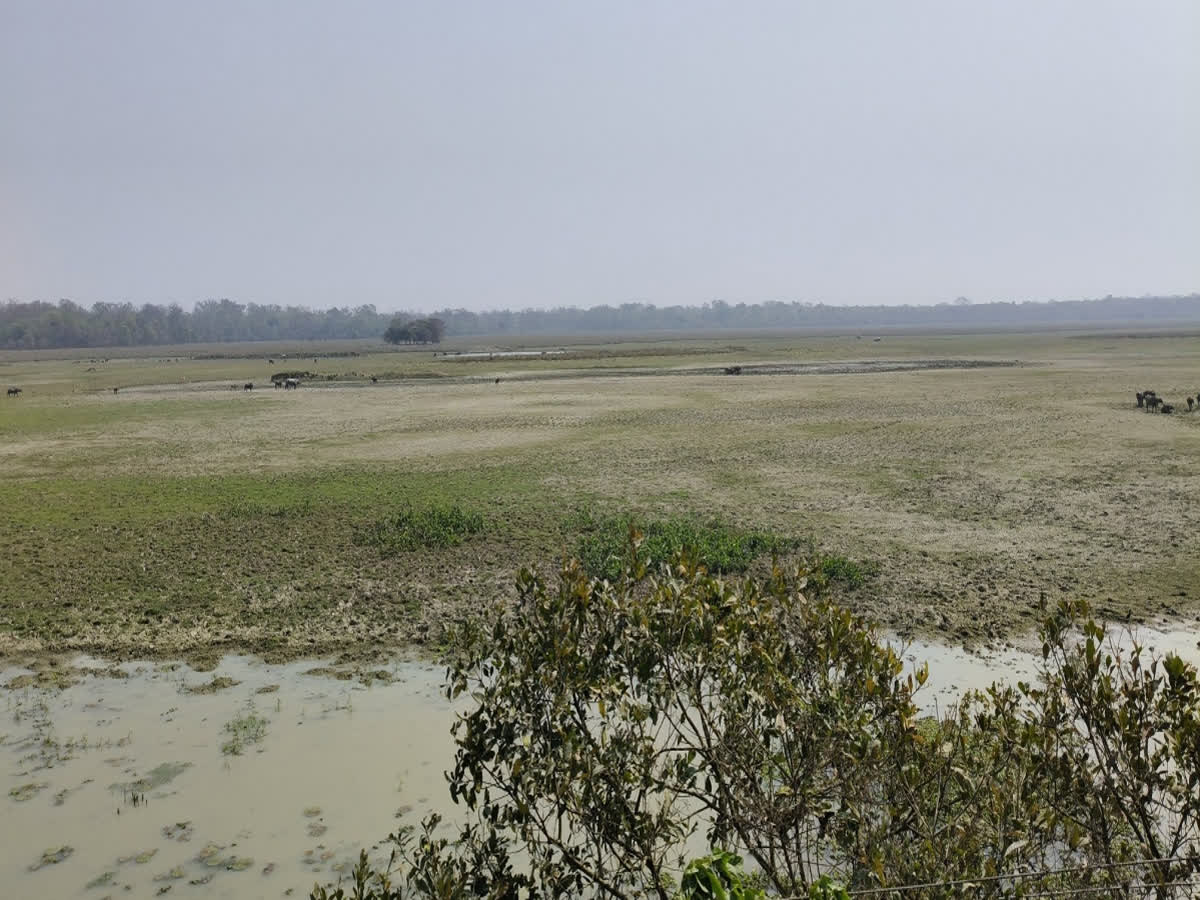Pobitora Wildlife Sanctuary

- 15 Mar 2025
In News:
Pobitora Wildlife Sanctuary, located in Assam, is renowned for its high density of the Great Indian One-Horned Rhinoceros and diverse biodiversity. The sanctuary, covering 38.85 km², is facing a growing concern as one of its major wetlands, TamulidobaBeel, is drying up. This situation underscores the urgent need for habitat management to protect the sanctuary's wildlife.
About Pobitora Wildlife Sanctuary:
- Location: Located within 30 km of Guwahati, Assam, it was established in 1998 and spans 48.81 km².
- Fauna: Famous for its rhino population, the sanctuary also houses leopards, wild boars, barking deer, wild buffaloes, and over 2,000 migratory birds.
- Flora: The sanctuary is dominated by wet savannah and marshland, though the invasive water hyacinth is a significant problem, especially for waterfowl.
TamulidobaBeel: A Crucial Wetland
- Role: A key water body within the sanctuary, TamulidobaBeel is vital for rhinos, water buffaloes, and migratory birds.
- Drying Concern: Experts and locals have observed the early drying up of the Beel, a trend that has worsened over the past few years. Migratory birds have already abandoned the wetland earlier than expected, signaling a broader ecological imbalance.
Factors Contributing to Drying of the Wetland:
- Siltation: The deposition of silt has significantly reduced water retention in the Beel.
- Climate Change: Predictions of a hotter weather season (March-May 2025) by the India Meteorological Department suggest further strain on the sanctuary's water resources, affecting biodiversity.
Ecological Implications:
- Rhino Habitat Impact: About 20-25 rhinos are regularly found near TamulidobaBeel. The drying of this wetland increases water scarcity in their core habitat, risking human-animal conflicts as rhinos may stray outside the sanctuary.
- Bird Migration: The Beel also serves as a migratory bird hub, particularly in winter. Early drying may disrupt migration patterns, affecting bird populations.
Government Response and Measures:
- Desilting Efforts: The Forest Department has taken proactive measures, including desilting the Beel to restore water levels and maintain its ecological functions.
- Expert Consultations: Collaborations with institutions like IIT Guwahati are underway to assess and manage the wetland restoration scientifically.
- Long-term Plans: Restoration efforts are focused on improving water retention and managing silt deposition, alongside broader habitat management initiatives.
Expert Recommendations:
- Experts emphasized the critical need for scientific habitat management and stressed the importance of restoring wetlands to ensure the sanctuary's long-term ecological balance.
- The government must focus on sustainable habitat conservation and water management strategies to protect species, especially the rhinos.
